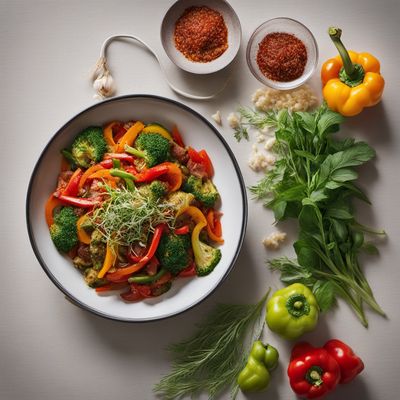
Ingredient
Plantains - balbisiana cultivars
The Versatile Tropical Delight
Plantains are a type of banana that is commonly used in cooking due to its starchy texture and mild flavor. Unlike sweet bananas, plantains are typically consumed when they are green or slightly yellow, and they can be cooked in various ways to create both savory and sweet dishes. With their versatility and unique taste, plantains are a staple ingredient in many tropical cuisines.
Origins and history
Plantains have a rich history dating back thousands of years, originating in Southeast Asia and spreading to Africa, the Caribbean, and Latin America through trade and colonization. They have become an integral part of the culinary traditions in these regions, featuring prominently in dishes such as tostones, mofongo, and maduros.
Nutritional information
Plantains are a good source of dietary fiber, vitamins A and C, and potassium. They are also lower in sugar compared to sweet bananas, making them a suitable option for individuals watching their sugar intake. However, plantains are higher in calories and carbohydrates, so portion control is important for those on a restricted diet.
Allergens
Plantains are not known to be allergenic, but individuals with a latex allergy may experience cross-reactivity and should exercise caution when consuming plantains.
How to select
When selecting plantains, choose ones that are firm and free from blemishes or soft spots. Green plantains are less sweet and more starchy, while yellow plantains are slightly sweeter and softer. The desired ripeness depends on the intended use, as green plantains are better suited for frying or boiling, while yellow plantains are ideal for baking or grilling.
Storage recommendations
To store plantains, keep them at room temperature until they reach the desired ripeness. Once ripe, they can be stored in the refrigerator for up to a week. If the plantains are not yet ripe, placing them in a paper bag can help speed up the ripening process. Avoid storing plantains in direct sunlight or near other fruits, as they can ripen too quickly.
How to produce
Plantains can be grown in tropical or subtropical regions with warm temperatures and high humidity. They require well-drained soil and regular watering. While they can be grown from seeds, it is more common to propagate them from suckers or corms.
Preparation tips
Plantains can be prepared in a variety of ways depending on their ripeness. Green plantains are often sliced and fried to make tostones or chips. They can also be boiled and mashed to create mofongo, a popular dish in Puerto Rico. Yellow plantains are typically baked, grilled, or sautéed and served as a side dish or dessert. Ripe plantains can be used in sweet preparations such as maduros, which are caramelized plantains.
Culinary uses
Plantains are widely used in Caribbean, African, and Latin American cuisines. They are a key ingredient in dishes such as tostones, mofongo, and maduros. Plantains can be used in both savory and sweet applications, adding a unique flavor and texture to various recipes.
Availability
Plantains are commonly available in tropical regions, including countries such as Costa Rica, Colombia, Nigeria, and the Dominican Republic. They can also be found in specialty grocery stores or international markets in other parts of the world.

